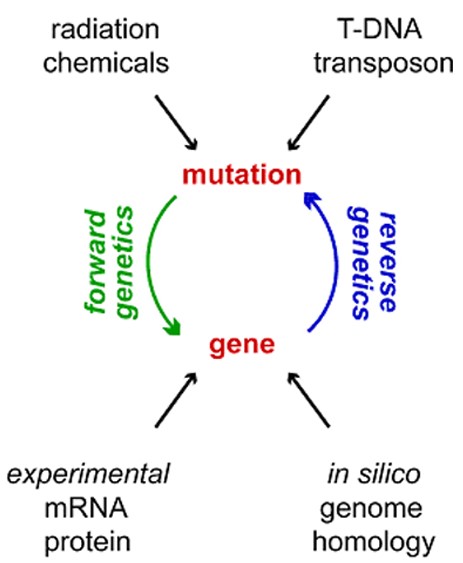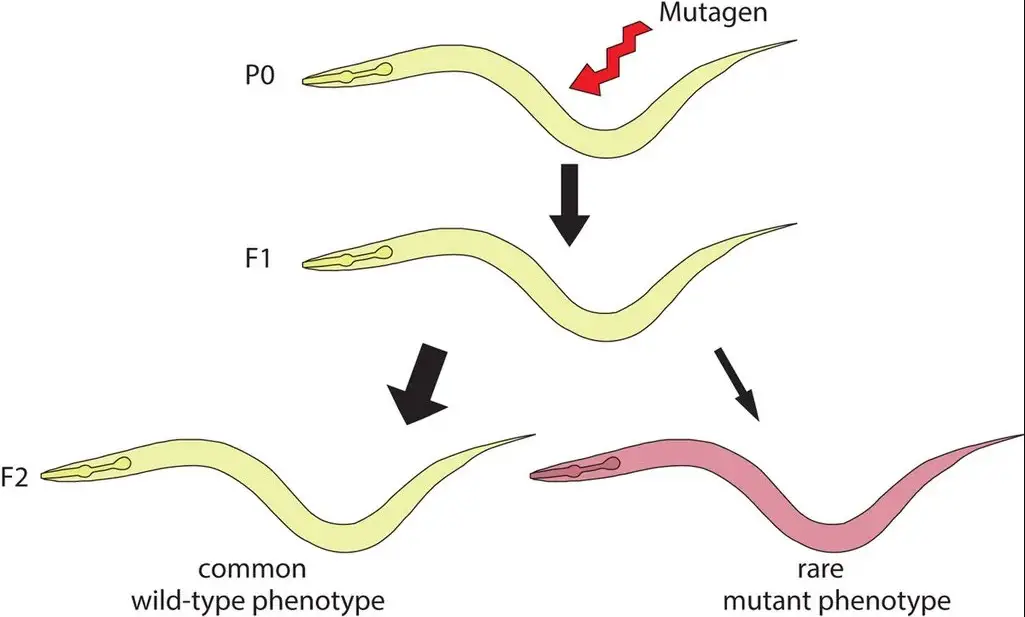Genetic mutations are alterations in the DNA sequence that can have wide-ranging effects on an organism, from changing physical traits to influencing susceptibility to diseases. These mutations are the driving force behind genetic diversity and evolution, making them a cornerstone of both evolutionary biology and medicine. Understanding the nuances between different types of mutations can shed light on complex biological processes and inform genetic research and therapy.
The distinction between forward and reverse mutations lies at the heart of genetic mutation studies. Forward mutations change the wild-type allele of a gene to a mutant form, potentially altering an organism’s phenotype. Conversely, reverse mutations revert a mutant allele back to its wild-type state, restoring the original phenotype. This dynamic between mutation and reversion plays a crucial role in maintaining genetic stability and diversity.
Forward and reverse mutations serve as fundamental concepts for geneticists, offering insights into the mechanisms of mutation, the evolutionary process, and the basis of many genetic disorders. By comparing these mutations, researchers can better understand how genetic variations arise and persist within populations, and how they can be manipulated for medical and biotechnological applications.

Mutation Basics
What is Mutation?
A genetic mutation is a permanent change in the DNA sequence that makes up a gene. DNA, the blueprint of life, dictates how organisms are built and function. When this sequence is altered, it can lead to changes in the physical traits, or phenotype, of an organism. Mutations range from changes in a single base pair to deletions or insertions of large sections of DNA. They play a crucial role in diversity and evolution, serving as the raw material on which natural selection acts. Without mutations, evolution would stall, leaving species unable to adapt to changing environments or to develop new traits.
Types of Mutations
Mutations can occur in various forms, impacting genes and organisms in different ways. Understanding these types is fundamental to grasping the broader implications of genetic mutations.
- Point Mutations: These involve a change in a single nucleotide, the basic building block of DNA. They are further divided into:
- Missense mutations, which change one amino acid to another in a protein.
- Nonsense mutations, which introduce a stop codon, prematurely halting protein synthesis.
- Silent mutations, which change a nucleotide but do not alter the amino acid sequence of the protein.
- Insertions and Deletions: These mutations add or remove nucleotides from the DNA sequence. They can have a dramatic effect, especially if they alter the reading frame (the way nucleotides are grouped into codons), leading to frameshift mutations.
- Copy Number Variants (CNVs): These are larger structural changes where entire sections of the genome are duplicated or deleted, affecting multiple genes or regulatory regions.
- Inversions and Translocations: Parts of the DNA sequence can become inverted or moved from one chromosome to another, potentially disrupting gene function.
Forward Mutation
Definition
A forward mutation changes the wild-type allele (the most common form of a gene in a population) to a mutant form. This transformation can lead to new or altered traits and is a primary source of genetic variation. Forward mutations are fundamental to the study of genetics and evolution, providing insight into how genetic diversity arises.
Characteristics
Forward mutations can be characterized by their effects on the organism:
- Loss of Function: Often, forward mutations lead to a reduced or complete loss of the functional activity of a gene product, such as an enzyme or structural protein.
- Gain of Function: Less commonly, these mutations can result in a new or enhanced function of the gene product.
- Visible Mutations: Some forward mutations result in observable changes in the organism’s appearance, behavior, or physiology.
- Conditional Mutations: These mutations express their effects only under certain environmental conditions.
Examples of forward mutations include the development of antibiotic resistance in bacteria and the various forms of color vision deficiencies in humans, each traced back to specific changes in the DNA sequence.
Impact on Genes
The impact of forward mutations on gene function and organism traits is profound:
- Alteration of Protein Function: A forward mutation can change the shape or stability of a protein, affecting its ability to perform its normal function.
- Regulatory Effects: Mutations in regulatory regions can increase or decrease the expression of genes, leading to overproduction or deficiency of certain proteins.
- Phenotypic Changes: Changes at the genetic level can manifest as new physical traits, some of which may provide an advantage or disadvantage in terms of survival and reproduction.

Reverse Mutation
Definition
A reverse mutation, or reversion, is a genetic change that restores a mutated gene back to its original, or wild-type, state. This concept is vital for distinguishing between the types of genetic alterations that can occur within organisms. While forward mutations introduce new traits by altering the genetic sequence, reverse mutations undo these changes, potentially reverting the phenotype associated with the mutation back to normal.
Characteristics
Reverse mutations have unique characteristics that distinguish them from forward mutations:
- Restorative Nature: They can reverse the effects of a forward mutation, bringing back the original function of the gene.
- Specificity: Reverse mutations must occur in the same gene that was affected by the forward mutation but do not necessarily have to reverse the exact DNA sequence change.
- Conditional Reversions: Some reversions may only partially restore gene function or require specific environmental conditions to manifest.
Examples include the restoration of antibiotic sensitivity in previously resistant bacterial strains or the reversion of a fruit fly’s eye color mutation back to its wild-type color.
Role in Genetic Repair
Reverse mutations play a crucial role in genetic repair and stability:
- Natural Error Correction: They act as a natural mechanism for correcting harmful mutations, maintaining genetic integrity across generations.
- Adaptive Response: In fluctuating environments, reverse mutations can provide a quick adaptation mechanism, allowing organisms to revert to previous states when advantageous.
Comparing Forward and Reverse Mutation
Genetic Consequences
Forward and reverse mutations have different genetic outcomes:
- Variability vs. Stability: Forward mutations increase genetic diversity, while reverse mutations contribute to genetic stability by restoring original phenotypes.
- Adaptive Evolution: Both types of mutations are crucial for adaptation, with forward mutations offering new variations and reverse mutations allowing populations to revert to optimal states under changing conditions.
Evolutionary Significance
The evolutionary implications of these mutations are profound:
- Dynamic Equilibrium: Forward and reverse mutations create a dynamic balance between introducing and correcting genetic changes, essential for the evolutionary process.
- Survival and Adaptation: Mutations provide the genetic variability needed for natural selection, with forward mutations offering new traits for selection and reverse mutations allowing reversibility in genetic adaptation.
Practical Implications
The understanding of forward and reverse mutations has significant applications:
- Genetic Engineering: Knowledge of these processes is crucial for gene editing techniques, where precise modifications can be made and potentially reversed.
- Disease Research: Insights into mutation mechanisms help in developing therapies for genetic disorders, leveraging reversions to correct pathological mutations.
- Biotechnology: Mutations are exploited in biotechnology for developing new biological products and processes, with the ability to reverse changes ensuring safety and control.
Case Studies
Research Findings
Significant studies highlight the importance of mutations:
- Microbial Resistance: Research into bacterial resistance mechanisms has revealed how forward mutations confer resistance to antibiotics, while reverse mutations can restore sensitivity, offering insights into combating antibiotic resistance.
- Genetic Disorders: Studies on genetic disorders like cystic fibrosis or sickle cell anemia demonstrate how mutations and potential reversions impact disease expression and treatment strategies.
Medical Applications
Understanding these mutations advances medical science:
- Gene Therapy: Techniques that introduce or correct mutations in patients’ genomes show promise for treating genetic diseases, with reversions playing a key role in ensuring the reversibility and safety of treatments.
- Personalized Medicine: Insights into individual genetic variations, including susceptibility to mutations and potential for reversions, are shaping personalized approaches to prevention and treatment.
FAQs
What is a Forward Mutation?
A forward mutation is a genetic change that alters a wild-type allele to a mutant version, which can lead to new traits or diseases. These mutations are the initial steps in the process of genetic variation, providing the raw material for evolution and natural selection.
How Does a Reverse Mutation Work?
Reverse mutations, or reversions, restore a mutant allele back to its original, wild-type form. This process can occur naturally, correcting genetic errors and potentially reversing the effects of harmful mutations, thereby acting as a natural safeguard for genetic integrity.
Why are Forward and Reverse Mutations Important?
These mutations are crucial for understanding genetic variability, the evolutionary process, and the molecular basis of diseases. They help scientists and medical professionals develop strategies for genetic engineering, therapy, and disease prevention by manipulating genetic material to achieve desired outcomes.
Can Reverse Mutations Correct Genetic Disorders?
In some cases, reverse mutations can naturally correct genetic disorders by reverting a harmful mutant allele back to its normal state. This phenomenon underpins some genetic therapies that aim to induce reverse mutations to treat genetic diseases.
Conclusion
The intricate dance between forward and reverse mutations highlights the dynamic nature of genetics. Through these mutations, the endless variability of life is generated, providing the foundation for evolution and the development of unique traits and capabilities. Understanding these processes not only deepens our knowledge of biology but also opens doors to innovative medical treatments and biotechnological advances.
Reflecting on the significance of forward and reverse mutations enriches our appreciation for the complexity and resilience of life. These genetic mechanisms ensure the continuity of life’s diversity, offering both challenges and opportunities for humanity as we strive to harness their potential for the betterment of health and understanding of our biological heritage.

